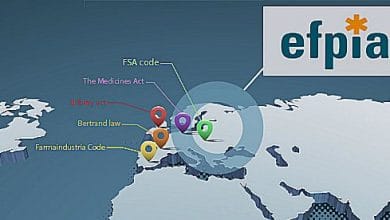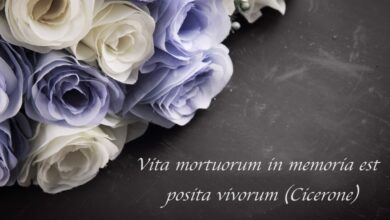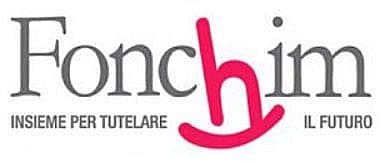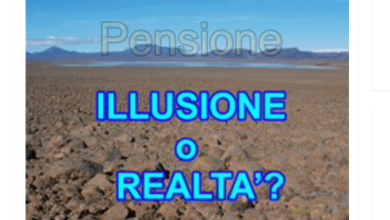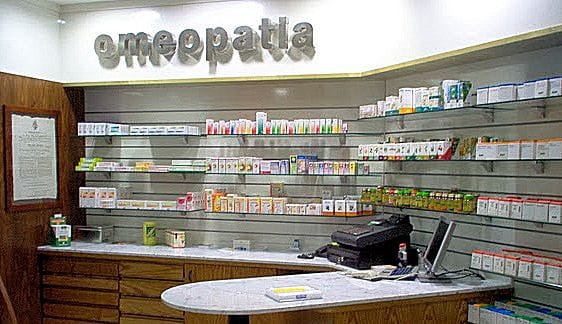
A cost-benefit study demonstrates the efficacy of homeopathic therapy and unmasks the true origin of the crusade against homeopathy: the risk of economic damage to conventional pharmacology.
18/12/2015 – THE PRINT OPINIONS
 While Sergio Pecorelli, president of the board of directors of AIFA, the Italian Medicines Agency which governs a market of 30 billion, he resigns for the suspicion of having received undue contributions from the pharmaceutical environment that he had to control, much of the journalistic world is indignant at the decision of the Tuscany Region of wanting to pay for "Non-Conventional Medicines" and continues to give voice to the personal anti-homeopathy crusade of Prof Silvio Garattini who, deaf to everything that has been done in the homeopathic scientific world up to now, has been repeating, as a chemist, in a monotonous way for 30 years the usual criticisms towards a pioneering clinical approach of biophysical medicine.
While Sergio Pecorelli, president of the board of directors of AIFA, the Italian Medicines Agency which governs a market of 30 billion, he resigns for the suspicion of having received undue contributions from the pharmaceutical environment that he had to control, much of the journalistic world is indignant at the decision of the Tuscany Region of wanting to pay for "Non-Conventional Medicines" and continues to give voice to the personal anti-homeopathy crusade of Prof Silvio Garattini who, deaf to everything that has been done in the homeopathic scientific world up to now, has been repeating, as a chemist, in a monotonous way for 30 years the usual criticisms towards a pioneering clinical approach of biophysical medicine.
In this chorus of negative and aggressive voices, however, the sounds of the results of various scientific works rise, opening up positive opportunities.
There Prof Lucietta Betti of the University of Bologna keep posting the really cool results on the effect of homeopathic medicines on plants which, alone, could DEFINITELY close the game with the detractors of homeopathy: models with large numbers, free from suggestion or placebo effect, high statistical significance.
 It was also recently published in the magazine Natural Medicine this work on cost benefit of homeopathic therapy in France. I report it because, like all previous studies of this type, it offers interesting food for thought.
It was also recently published in the magazine Natural Medicine this work on cost benefit of homeopathic therapy in France. I report it because, like all previous studies of this type, it offers interesting food for thought.
The economic impact of homeopathy
About half (56%) of the French population use homeopathic medicines and 11% on a regular basis. In view of this diffusion, which therefore allows for a significant sample of general practitioners and patients, an observational study was conducted on a national scale (EPI3) in which 6,379 citizens from 804 general practice practices participated. The research evaluated the impact of homeopathy on some pathologies.
Doctors were divided into three groups according to the method of prescription: conventional medicine (GPs) only; mixed method-conventional medicine integrated with homeopathy (MMG-Mx) and homeopathy (MMG-Ho). The impact assessment covered musculoskeletal disorders, upper respiratory tract infections and sleep disorders, anxiety and depression. Patients were asked to complete a questionnaire on socio-demographic aspects, style and quality of life and clinical progression, therapy and drug consumption, adverse effects and loss of therapeutic opportunity were evaluated. The results of the “sleep disorders, anxiety and depression” cohort, involving a total of 346 patients, were 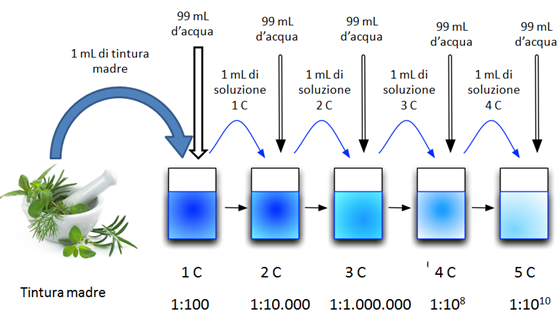 recently published in the journal Homeopathy (1). The follow-up, completed by 79.8% of the sample, verified with telephone interviews at 1, 3 and 12 months the use of anxiolytics, hypnotics and antidepressants and at 12 months the occurrence of traumatic events such as falls, road accidents, etc. At the beginning of the study, 76.8% of the patients in the conventional medicine group, 71.1% in the mixed group and 40.3% in the homeopathy group used psychotropic drugs. During the follow-up, the percentage decreased in both the homeopathy and mixed groups compared to the conventional medicine group, but the reduction in drug consumption reached statistical significance only in the homeopathy group, even among the most severe cases. It was also seen that the percentage of traumatic events reported in the conventional medicine group was almost double that reported by the other two groups. The impact of 1 year of homeopathic treatment of the pathologies examined was therefore positive. Starting from this research, another study, recently published (2), investigated the economic part. Three parameters analysed: cost of the visit, cost of the drug and total cost (visit + prescription) evaluating for each the cost for the NHS, the remaining cost (borne by the patient and/or supplementary health insurance) and health care costs, i.e. the set of the two costs.
As regards the NHS, treatment with homeopathy was less expensive (€42.00 versus €65.25, -35%). The cost of prescriptions was double for patients treated with conventional medicine (€48.68 versus €25.62). For the costs related to supplementary supplementary insurance, conventional medicine treatment was less expensive due to the lower cost of the visit (6.19 € vs 11.20 € for homeopathy), while the cost of homeopathic medicines and conventional medicines were substantially similar (15.87 € vs 15.24 €). Healthcare expenditure was 20% lower for patients treated by homeopathic doctors than for those using only conventional medicine (€68.93 versus €86.63). In addition, homeopaths have prescribed fewer psychoactive drugs, antibiotics and non-steroidal anti-inflammatories. THE In conclusion, the management of patients by homeopathic doctors appears to be less expensive from a global perspective and can represent an advantage in terms of public health expenditure.
recently published in the journal Homeopathy (1). The follow-up, completed by 79.8% of the sample, verified with telephone interviews at 1, 3 and 12 months the use of anxiolytics, hypnotics and antidepressants and at 12 months the occurrence of traumatic events such as falls, road accidents, etc. At the beginning of the study, 76.8% of the patients in the conventional medicine group, 71.1% in the mixed group and 40.3% in the homeopathy group used psychotropic drugs. During the follow-up, the percentage decreased in both the homeopathy and mixed groups compared to the conventional medicine group, but the reduction in drug consumption reached statistical significance only in the homeopathy group, even among the most severe cases. It was also seen that the percentage of traumatic events reported in the conventional medicine group was almost double that reported by the other two groups. The impact of 1 year of homeopathic treatment of the pathologies examined was therefore positive. Starting from this research, another study, recently published (2), investigated the economic part. Three parameters analysed: cost of the visit, cost of the drug and total cost (visit + prescription) evaluating for each the cost for the NHS, the remaining cost (borne by the patient and/or supplementary health insurance) and health care costs, i.e. the set of the two costs.
As regards the NHS, treatment with homeopathy was less expensive (€42.00 versus €65.25, -35%). The cost of prescriptions was double for patients treated with conventional medicine (€48.68 versus €25.62). For the costs related to supplementary supplementary insurance, conventional medicine treatment was less expensive due to the lower cost of the visit (6.19 € vs 11.20 € for homeopathy), while the cost of homeopathic medicines and conventional medicines were substantially similar (15.87 € vs 15.24 €). Healthcare expenditure was 20% lower for patients treated by homeopathic doctors than for those using only conventional medicine (€68.93 versus €86.63). In addition, homeopaths have prescribed fewer psychoactive drugs, antibiotics and non-steroidal anti-inflammatories. THE In conclusion, the management of patients by homeopathic doctors appears to be less expensive from a global perspective and can represent an advantage in terms of public health expenditure.
http://www.medicinanaturalenews.it/limpatto-economico-dellomeopatia/
References
1.Lamiae Grimaldi-Bensouda, Lucien Abenhaim, Jacques Massol, Didier Guillemot, Bernard Avouac, Gerard Duru, France Lert, Anne-Mari. Utilization of psychotropic drugs by patients consulting for sleeping disorders in homeopathic and conventional primary care settings: the EPI3 cohort study. Homeopathy, 2015, 104 (3), 170-175.
2. Aurélie Colas, Karine Danno, Cynthia Taba, Jenifer Ehreth and Gérard Duru. Economic impact of homeopathic practice in general medicine in France. Health Economics Review (2015) 5:18.
“HOMEOPATHY? FRESH WATER"
Garattini, doctor and director of the Mario Negri institute speaks: “the law is contradictory. Homeopathic products can be found in pharmacies but on the packaging it must be written "without approved therapeutic indications".
Silvio Garattini denounces homeopathic remedies in his book: “One of the most widespread irrational myths is that according to which all that is natural is good. However, we forget that the worst poisons, viruses are nature. So paradoxically those who don't want to take a drug because it's made of chemicals end up taking other chemicals they know nothing about”….
Gianni Barbacetto for the "Everyday occurrence" – source DagoSpia Oct 21, 2015
 The word he repeats the most, as he speaks, is "independence". From pharmaceutical industries, from finance, from politics, from faiths, from superstitions. At 87 years old (carried splendidly), Silvio Garattini continues to show off his white turtlenecks on the bridge of the Mario Negri Institute for Pharmacological Research in Milan. Research, training, information: these are the three activities to which he has been dedicated for more than fifty years. “Not just research”, he explains, “the scientist shouldn't remain locked up in his ivory tower. It must also inform, explain and make itself understood by people”.
The word he repeats the most, as he speaks, is "independence". From pharmaceutical industries, from finance, from politics, from faiths, from superstitions. At 87 years old (carried splendidly), Silvio Garattini continues to show off his white turtlenecks on the bridge of the Mario Negri Institute for Pharmacological Research in Milan. Research, training, information: these are the three activities to which he has been dedicated for more than fifty years. “Not just research”, he explains, “the scientist shouldn't remain locked up in his ivory tower. It must also inform, explain and make itself understood by people”.
He did it by putting his face on it and clearly saying how he thinks about superstitions, magical beliefs, anti-scientific hoaxes, the refusal to vaccinate children, Di Bella, Stamina. Even on homeopathy, which is so fashionable. "I've been criticizing it for fifty years for its absolute lack of scientific basis." Now fresh water has just arrived in the bookstore? Everything you need to know about homeopathy (Sironi editore), written with a group of colleagues.
The question mark in the title, in truth, considers it completely superfluous: “There is no active ingredient in homeopathic preparations: they are just fresh water. There are those who have promised a prize of 100 million pounds to whoever manages to put the labels with the right name on homeopathic preparations from which they have been removed: an impossible undertaking, because those products are all the same, they are all fresh water”.
 The mysterious "memory" of water. They are prepared as follows: take a substance and dilute it by adding 99 parts of water. It is the "hundredth". Then one hundredth of this solution is taken and another 99 parts of water is added. And so on, 20, 30 times or more. It is the dilution invented by Samuel Hahnemann, the founder of homeopathy. Read on the packaging: if you find 20CH written it means that this process has been repeated twenty times. "According to Avogradro's law", explains Garattini, "even after the sixth centesimal, there is no longer a measurable quantity of molecules of the diluted active principle in the liquid: only water remains".
The mysterious "memory" of water. They are prepared as follows: take a substance and dilute it by adding 99 parts of water. It is the "hundredth". Then one hundredth of this solution is taken and another 99 parts of water is added. And so on, 20, 30 times or more. It is the dilution invented by Samuel Hahnemann, the founder of homeopathy. Read on the packaging: if you find 20CH written it means that this process has been repeated twenty times. "According to Avogradro's law", explains Garattini, "even after the sixth centesimal, there is no longer a measurable quantity of molecules of the diluted active principle in the liquid: only water remains".
However, the proponents of homeopathy say that water retains, in some mysterious way, the "memory" of the active principle with which it has come into contact. “Denied by laboratory experiments. There is no trace of this 'memory'. After all, if it were true, water would be the worst poison in the world, given that in its cycle it comes into contact with substances of all kinds”.
At this point Professor Garattini indulges in an oenological interlude: "If I take a bottle of excellent Amarone and dilute it with 99 bottles of water and then do it again 20 or 30 times, and finally bottle the final result by selling it as homeopathic Amarone, I want to see what happens to me: well, we all know how to see the difference between wine and water, but not everyone wants to see it between a medicine and water". No, millions of people don't see it. The homeopathy market in Italy is worth about 400 million euros a year, around 5 percent of the expenditure for non-refundable medicines paid directly by citizens (8.16 billion euros).
According to Istat, Italians who turn to alternative medicines in general are 4.9 million, equal to 8 percent of the population: half of these resort to homeopathic "cures". But according to other surveys, there are at least 10 million "clients" who use homeopathy.
 At least 700 homeopathic doctors work in Italy (out of 250,000), but all pharmacies can sell homeopathic products without a prescription. "I understand doctors, who know little about chemistry", Garattini smiles, "but pharmacists have studied it well: why do they agree to sell nothing and sometimes even recommend it to anyone who enters their pharmacy?". Tolstoy's musk duck and a cold Perhaps because it pays off.
At least 700 homeopathic doctors work in Italy (out of 250,000), but all pharmacies can sell homeopathic products without a prescription. "I understand doctors, who know little about chemistry", Garattini smiles, "but pharmacists have studied it well: why do they agree to sell nothing and sometimes even recommend it to anyone who enters their pharmacy?". Tolstoy's musk duck and a cold Perhaps because it pays off.
The Oscillococcinum, to say, is very strong. It is produced by Boiron, the world leader in homeopathy based in France, and is advertised as a drug against the flu. Many swear that it works: it heals it, or even prevents it. “Tolstoy”, smiles Garattini, “said that with medicines a cold heals in seven days, without medicines in a week. We analyzed it in the laboratory, Oscillococcinum: like other homeopathic products, it is nothing but sugar balls soaked in that water super diluted by the 'centesimals'. Expensive, to be sugar: 2,000 euros per kilo". Boiron says the active ingredient reported in Oscillo is “Anas Barbariae Hepatis et Cordis Extractum”.
It's supposed to be an extract of musk duck heart and liver, stuff that has no known medicinal qualities. However, don't worry: the dilutions are such that even vegetarians and animal rights activists can remain calm, there is no trace of musk duck in the Oscillo. Who knows who has taken the trouble to blend the heart and liver of the bird (and when, and where).
We can console ourselves by thinking that, given the dilutions, a single sample should have been enough to prepare the millions of packs of Oscillo sold for years all over the world. The indicated dilution is 200CK: here the K indicates that the method of preparation is the "Korsakovian" one. 5 ml of the starting material (or homeopathic strain) are poured into a 15 ml bottle and stirred (dynamization). The bottle is emptied by suction so that a quantity of 0.05 ml of the original dilution remains.
 Another 5 ml of distilled water is poured into the same bottle, stirred, the bottle is emptied again by suction and weighed. The aspirated liquid is the first Korsakovian dilution, or 1K. Repeat the operation 200 times and you're done. “There is a legislative problem in Italy”, continues Garattini. “On the one hand, the circulation and sale in pharmacies of these products is permitted, without any documentation on their effectiveness; on the other, it is mandatory that the packaging bear the words 'Without approved therapeutic indications'"
Another 5 ml of distilled water is poured into the same bottle, stirred, the bottle is emptied again by suction and weighed. The aspirated liquid is the first Korsakovian dilution, or 1K. Repeat the operation 200 times and you're done. “There is a legislative problem in Italy”, continues Garattini. “On the one hand, the circulation and sale in pharmacies of these products is permitted, without any documentation on their effectiveness; on the other, it is mandatory that the packaging bear the words 'Without approved therapeutic indications'"
Yet they are sold with precise indications: there is the flu pill, eye drops, cough syrup… “These are legislative contradictions that logic cannot explain. In Australia, the government has commissioned a scientific commission which has drawn up a report which clearly states that they are products devoid of any therapeutic effect.
They are useless, or in some cases even harmful, when taken in place of really needed drugs. In Italy, on the other hand, we are left with contradictory legislation: evidently there are pressure groups that get their results”. Many believe it.
Someone heals. “The placebo effect is especially triggered when someone feels cared for, when they have their own pill and someone who takes care of them. But the real problem is that in Italy there is no scientific culture. Many refuse vaccinations, believe in the Di Bella method, defend Stamina, protest against animal testing. Ours is a literary-philosophical-legal culture that has not incorporated science. At most we accept the technique, but we have not introjected the scientific method. All governments, of all stripes, treat research as if it weren't the future of this country. The one in charge says Italy is restarting, but he cut research funding by another 15 percent this year.
 And be careful, let's dispel the myth of the brain drain: researchers have to go abroad, the problem is that they don't come back to us and that we don't attract foreign researchers to Italy. And that they are too few: 2.7 for every thousand workers, against a European average of 5.1.
And be careful, let's dispel the myth of the brain drain: researchers have to go abroad, the problem is that they don't come back to us and that we don't attract foreign researchers to Italy. And that they are too few: 2.7 for every thousand workers, against a European average of 5.1.
The jeweler who loved research
The adventure of Garattini, scientist, researcher, doctor, professor of chemotherapy and pharmacology, began in 1960. After experiences abroad, in the United States, he set about founding a pharmacological research center in Italy.
That year, a Milanese jeweler called him, Mario Negri, who had become rich passing from artisanal to industrial jewellery. He had also opened a pharmaceutical company, Farmacosmici, and had met that restless young researcher who wanted to convince him to finance research in Italy. "Garattini, don't worry", he told him, "I'm about to leave, but I will leave you what is necessary to make your project come true".
In 1961 the Mario Negri Foundation was born. In 1963, the first branch of the Institute opened in Quarto Oggiaro, on the outskirts of Milan. Today the Mario Negri has two offices, one in Milan, at the Bovisa, in front of the university faculties, and one in Bergamo. 750 people work there, with a turnover of 30 million a year. In its laboratories, 7,000 young researchers have been trained and 14,000 published scientific papers have been developed. “We make all our results public, we do not aim to patent products and therefore to keep our work secret. In this we are quite unique: also because we are independent.
We do not want to depend on industry, finance, politics, universities or religion. We collaborate with everyone, but we want to remain free”. He gives an example of how much that freedom costs: “Together with other institutes, they had participated in a large research project to study new antibiotics. However, when we understood that the pharmaceutical multinational Glaxo collected the results of the researches, but did not share them with the researchers, we decided to leave the game. We have lost some good money, but that's how we are: research is not a market”.
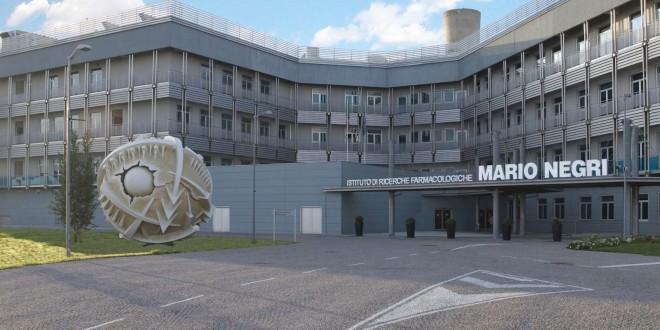 He even refuses to entrust fundraising for the Mario Negri to professionals. “I want every penny raised to be used for research, not to pay fundraising professionals. I know, with a structure of professionals we would collect more, but that's how I am". Against hoaxes and superstitions It's a unique story, that of his Mario Negri.
He even refuses to entrust fundraising for the Mario Negri to professionals. “I want every penny raised to be used for research, not to pay fundraising professionals. I know, with a structure of professionals we would collect more, but that's how I am". Against hoaxes and superstitions It's a unique story, that of his Mario Negri.
So much so that two sociologists, Donald Light and Antonio Maturo, wanted to tell it as a great international case in a volume entitled A Good Pharma and just published in the United States by Palgrave. It is a history of science, study and rigorous research. But Garattini spared no effort even in the battle against superstitions. With his friend Piero Angela, he animates the activities of Cicap, the Italian Committee for the control of claims on the paranormal. He has patiently tried to dismantle irrational and magical beliefs, but also the fashions of good nature at all costs.
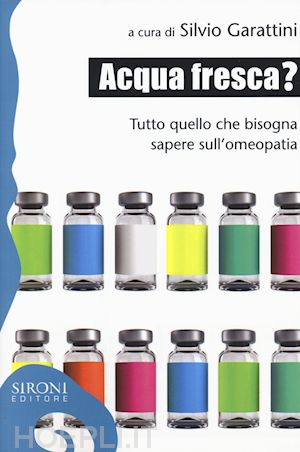 “One of the most widespread irrational myths is that everything that is natural is good. But we forget that the worst poisons, viruses and bacteria are nature. We need to make distinctions, but this does not happen. Thus, herbal shops that sell products whose composition we do not know proliferate: paradoxically, those who do not want to take a drug because it is made of chemical substances end up taking other chemical substances of which they know nothing".
“One of the most widespread irrational myths is that everything that is natural is good. But we forget that the worst poisons, viruses and bacteria are nature. We need to make distinctions, but this does not happen. Thus, herbal shops that sell products whose composition we do not know proliferate: paradoxically, those who do not want to take a drug because it is made of chemical substances end up taking other chemical substances of which they know nothing".
Even the pharmaceutical industry does not escape it: “The critical spirit must also be used towards official medicine. 50 percent of the drugs sold could be safely disposed of. There are entire categories of products, from dietary supplements to vitamins, from weight loss to free radical scavenging drugs, that simply don't exist in the scientific literature. They are forms of pharmaceutical consumerism that exploit a need in the public without offering any guarantees”.
Garattini continues to work on his two fronts, scientific research and public information. Always guarding independence as the most precious asset. He would deserve to be named Senator for life if the Senate hadn't been overturned by the latest reform


